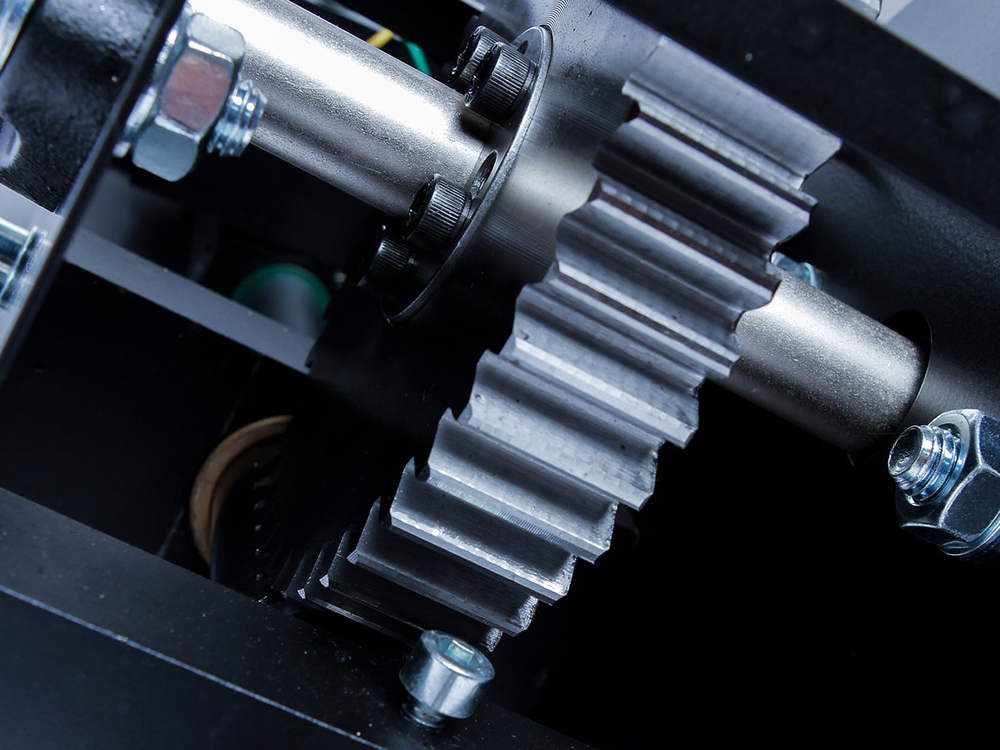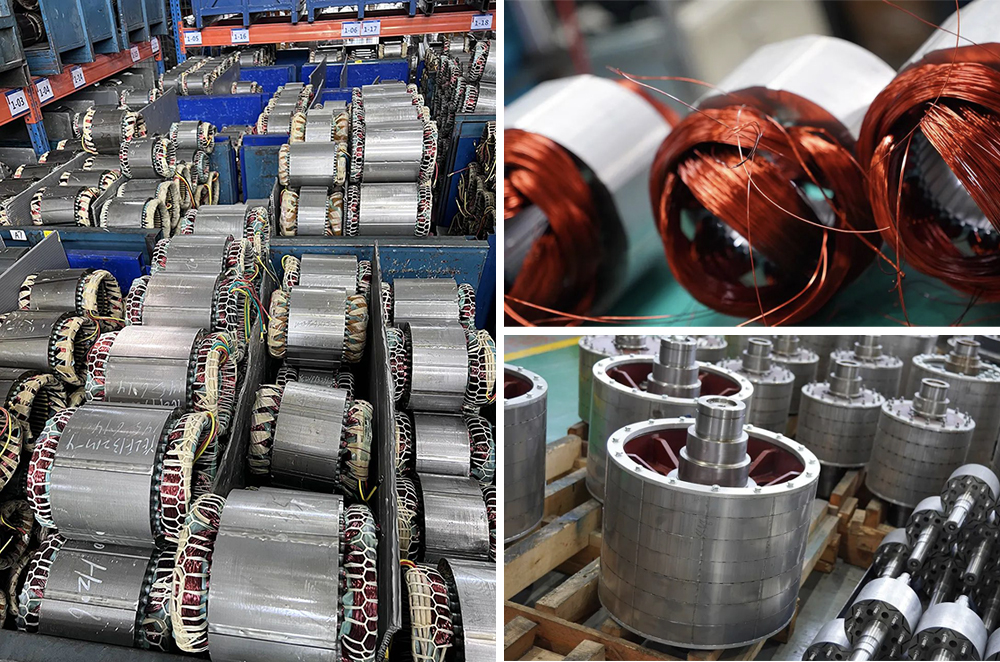In industrial production and equipment operation, motors serve as the core power source, and their stable operation directly affects production efficiency and equipment safety. However, the phenomenon of motor overload often occurs, which refers to the actual load of the motor exceeding the rated load during operation, leading to problems such as excessive current and temperature rise. If the motor is in an overloaded state for a long time, it is extremely easy to burn out and may also cause related equipment failures, resulting in serious economic losses. Therefore, it is of great practical significance to delve into the causes of motor overload and find effective solutions.

1、Common culprits of motor overload
Motor overload is not accidental, but the result of multiple factors working together, which can be mainly attributed to the following aspects:
① Mechanical load "overweight" or "jamming"
It is common for the actual load of the equipment to exceed the rated power of the motor, such as the conveyor belt being blocked by debris, the water pump head being too high, or the gearbox malfunctioning, all of which can make the motor "overwhelmed". At the same time, the jamming of mechanical transmission components can also bring enormous pressure to the motor, such as bearing wear, poor gear meshing, and coupling eccentricity, which can cause a sudden increase in motor running resistance and lead to overload.
② Motor selection is inherently inadequate
Improper motor selection is the 'invisible killer' that causes overload. If the rated power of the motor is lower than the actual demand, it is like letting a small horse pull a large car, which will inevitably lead to overload. In addition, the mismatch between motor speed, torque, and load can also cause problems. For example, if a high-speed motor is used for low-speed loads without a deceleration device, the motor cannot adapt to the load requirements, resulting in overload.
③ The power supply is "not awesome" or "out of order"
The issue of power supply cannot be ignored either. Abnormal voltage is a common cause. If the voltage is too low, the output torque of the motor will decrease. In order to maintain operation, the current will increase; Excessive voltage will exacerbate winding losses. Three phase voltage imbalance, when the deviation exceeds 5%, can cause excessive current in a certain phase. Compared to three-phase motors, power shortage is a "fatal blow". Phase loss operation can cause three-phase motors to switch to single-phase operation, resulting in a sharp increase in current and easy overload.
④ The motor itself is "sick"
Motor malfunctions can also cause overload. Aging or short circuit of winding insulation can cause abnormal increase in current. Bearing wear or poor lubrication can increase operational resistance and even cause rotor jamming. For asynchronous motors, rotor bar breakage can decrease their efficiency, increase current, and cause overload.
⑤ Environment and operation hinder progress
Environmental and operational factors can also have an impact on the operation of the motor. If the ambient temperature is too high and exceeds the allowable working temperature of the motor, it will cause poor heat dissipation and easy overload of the motor. Frequent starting, braking, or forward/reverse rotation can cause the motor to accumulate overload due to the starting current being 5-7 times the rated current. Blockage of the motor ventilation port, failure of the cooling fan, and inability to dissipate heat can also lead to overload.
2、Effective solutions for motor overload
We can take the following corresponding solutions to address the causes of motor overload mentioned above:
① Reduce and loosen the mechanical load
Timely check whether the equipment load is abnormal, such as cleaning up debris on the conveyor belt, adjusting the water pump valve to reduce the head, and reducing the burden on the motor. At the same time, maintenance of transmission components, replacement of worn bearings, adjustment of gear mesh clearance, and correction of coupling concentricity are carried out to ensure smoother motor operation and reduce resistance.
② Optimize motor selection by tailoring to individual needs
According to the actual load, calculate the power demand and replace the motor with the rated power matching. Usually, a margin of 10% -20% should be reserved to cope with unexpected situations. If the motor speed does not match the load, a reducer can be installed or a motor with a suitable speed can be replaced to ensure a perfect fit between the motor and the load.
③ Stable power supply provides' escort '
Install a voltage regulator or regulator to ensure that the voltage is within ± 5% of the rated value, providing a stable voltage environment for the motor. Detect the balance of three-phase voltage and promptly repair line faults such as disconnection and poor contact. In addition, installing phase loss protection devices such as thermal relays and motor protectors can prevent three-phase motors from running in phase loss and prevent a sudden increase in current.
④ Treat diseases and injuries or upgrade and replace motors
Regularly check the insulation resistance of the winding, and promptly repair or replace the winding if a short circuit is found. Regularly add lubricating grease to the bearings and replace damaged bearings; If the rotor bar breaks, it is necessary to replace the rotor or motor in a timely manner to ensure the good performance of the motor itself.
⑤ Improve the environment and create good conditions for operation
To reduce the ambient temperature, cooling fans and ventilation ducts can be installed to avoid the motor being close to heat sources and improve the motor's heat dissipation effect. Reduce frequent start stop and, if necessary, use variable frequency speed regulating motors to reduce the starting current through soft start and minimize the risk of overload. Regularly clean the motor ventilation openings to ensure smooth heat dissipation and allow the motor to operate in a suitable environment.
⑥ Install protective devices in advance
Install thermal relays, overload protectors, or intelligent motor protectors to monitor current and temperature in real time. Once an overload occurs, the power will automatically shut down to protect the safety of the motor. For important equipment, current monitoring instruments should be equipped to monitor the operating status in real time, detect and handle problems in a timely manner.
The core problem of motor overload lies in the mismatch or malfunction of "load motor power supply". To solve the problem of motor overload, it is necessary to investigate and handle it from multiple dimensions such as mechanical, electrical, and environmental factors. In daily maintenance, regularly checking the operation status of equipment, cleaning motors, monitoring current and temperature can effectively prevent overload problems, ensure stable operation of motors, improve production efficiency, and reduce equipment failure risks.
Hengda Electric has always been dedicated to the research and development, production, and service of various types of motors. With advanced technology and equipment, lean manufacturing processes, reliable product quality, and satisfactory after-sales service, the company provides customers with the most suitable motor professional solutions and creates greater social value.







